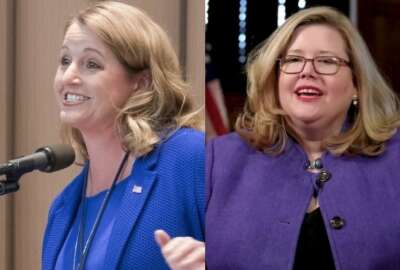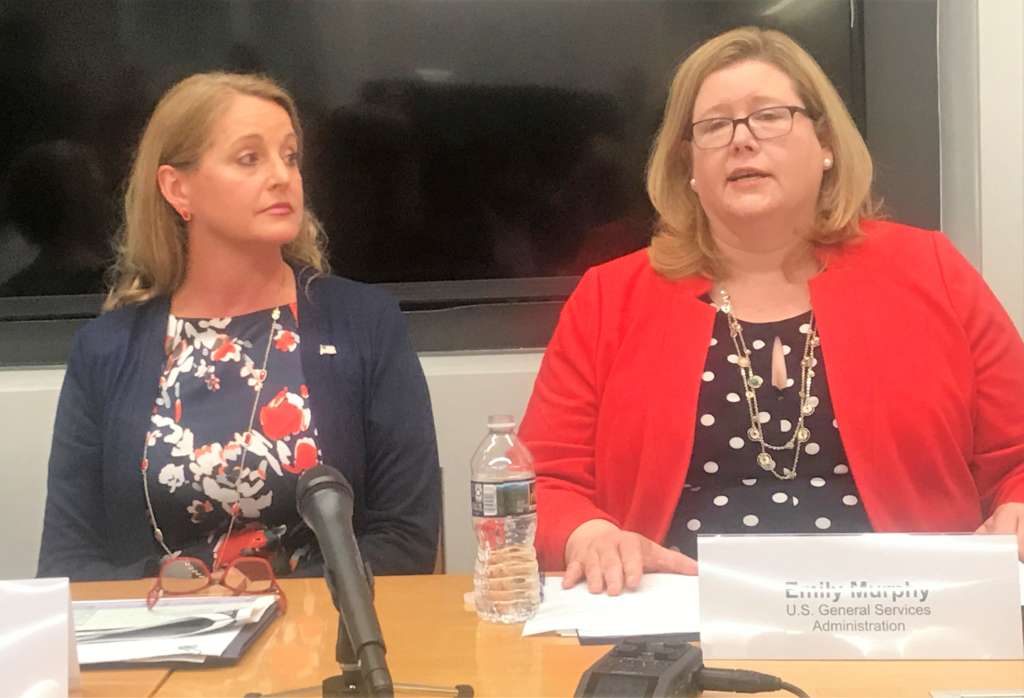
OMB hopes updated shared services strategy avoids past mistakes
The Office of Management and Budget said Quality Service Management Organizations will make it easier for agencies to adopt back-office shared services.
The Trump administration is putting its stamp on the long-challenged effort for agencies to move to back-office shared services.
A new memo from Russ Vought, acting director of the Office of Management and Budget, outlines an updated approach that attempts to build off of successes of the past, recognize well-known potholes that have stymied initiatives over the last 20 years, and, maybe most importantly, attempts to place the control of the planned changes in the hands of all agencies.
“This is not a project. This is a fundamental change in our operating model for how we deliver common services across the entire federal government,” said Suzette Kent, federal chief information officer, during a briefing to roll out the new strategy. “We are taking best practices found in the private sector and widely accepted globally and we are able to create efficiencies and improved resource capacity by reducing that duplication. Important is this is driving standardization and streamlining business processes.”

The memo details the new operating model that is focused on four agencies—the departments of Health and Human Services, Homeland Security and Treasury, and the General Services Administration—leading the respective efforts as Quality Services Management Offices (QSMOs). The organizations will establish the governance and accountability model that includes oversight boards and standards councils as well as customer agency officials.
“For the past several years we’ve been working to improve the federal shared services approach. There have been many steps forward, activities around building standards, bringing an all-of-government perspective to what are the things we do commonly across every agency and getting agreement on how we should deliver those things. We still have redundancy in a lot of those functions,” Kent said. “Today’s memo has a couple of key strategies to continue to expand those things that we already have and that already work very well, to agree on standards for potential future services and what’s really exciting today with all our partners, we are designating lead agencies for a set of common services where we’ve already agreed on the standards across the federal government. We are taking the next bold step forward.”
The QSMOs will be the central hub for all shared service activity. The organizations will act as overseers, conveners and consultants.
“A QSMO must be responsive to the customer agencies that will be using the service and must offer premiere capabilities, employing best practices from both the public and private sectors to offer competitive solutions that drive standardization and provide high quality service offerings that are responsive and adaptable to agency business needs,” the memo states. “Each agency designated by OMB for a QSMO role will submit a five-year implementation plan for assessment against a standard set of criteria to determine its ability to operate as an effective government-wide QSMO. These plans must include sustainable resource considerations, relevant skill sets, and effective stakeholder engagement necessary to execute the plan throughout the five-year life cycle. OMB and GSA will analyze the QSMO proposed plans and milestones and, if needed, will recommend corrective actions in consultation with the SSGB. Final designation is contingent approval of the five year plan by OMB.”
4 agency QSMO leads
GSA is leading the human resources, including payroll, effort.
Administrator Emily Murphy said the QSMO’s goal is to continue the journey with the Office of Personnel Management to create an end-to-end approach for civilian human resources transaction services.
Related Stories
David Lebryk, the Treasury Department’s Fiscal Assistant Secretary, said the financial management QSMO will help modernize more than 40 legacy financial management systems by standardization and automation.
“We look forward in the coming weeks to putting together a plan. We will be engaging the agencies in this effort as many are in various phases of where their financial systems are,” he said. “There are things that are going to be done soon, but this is also a multi-year effort. If it’s going to be done the right way, it needs to be a multi-year effort.”
HHS is leading the quality organizations around modernizing the grants management effort. Charles Keckler, the associate deputy secretary at HHS, said the quality organization will both be beneficial for agencies providing grants and grantees.
“The many recipients of grants are applying from a diverse array of HHS and non-HHS programs and the look and feel of the systems that they are interacting with are distinctive. Over time standards are strengthened and systems are improved, which will assist recipients and our grant partners and that will advance the entire ecosystem of service delivery,” he said.
DHS is leading the QSMO for cybersecurity shared services.
Jeanette Manfra, the DHS assistant director in the Cyber and Infrastructure Security Agency (CISA), said the initial thinking for shared services will follow the models of the continuous diagnostics and mitigation (CDM) program and other similar capabilities like end-point security and privileged access management.
“There will be some services that there are already agencies that want them like security operations centers and vulnerability disclosures policies and implementations. There are agencies that want to be able to do these, but don’t necessarily have the resources and it would be more cost efficient for us to do that as a consolidated service,” she said. “My idea is not mandating a bunch of services on them as that gets very complicated, but instead providing valuable services that they want to take part in and help them achieve OMB’s policies and their implementation.”
Agencies can have their choice of approaches
Murphy said the QSMOs will not be promoting a one-size fits all approach.
“The model we are putting forward now gives us a task order review board to make sure we are not over-customizing. The requirements themselves are being driven by the agencies, by OMB and by the QSMOs,” she said. “There are multiple different models for how you implement it. What role industry plays will be changing depending on what model it is, whether it is going to be hiring another agency to do the work, going to the private sector to do the work or having a partnership of the two together.”
More Technology News
Kent added the QSMOs lead is the owner of the marketplace and will figure out what offerings make the most sense for agencies.
This is where the QSMOs hope to differ than previous attempts, whether the Lines of Business effort under the Bush administration or the Obama administration’s public-private partnership approach. Where previous initiatives were focused on a narrow set of approaches, OMB seems to be saying agencies can determine their own path as long as it’s in between the guardrails set by the QSMOs.
Kent said the quality service organizations and OMB will follow the push-pull approach.
“The pull, we expect, will be we will be offering a higher quality of services and services that are needed by every single agency. And also a pull because the standards have been defined. This is the way you can move much more quickly through the process,” she said. “The push is from the operational model. If someone wants to acquire something different or do something different, their first stop is with the quality service management lead to understand how that aligns with the standards that have been set and the suite of solutions that’s already available. We have some process that is managed between GSA and OMB to make sure as we go forward there is a coordinated and thoughtful decision about why you are making a selection and how it aligns to the standards that have been set for the entire federal government.”
Copyright © 2024 Federal News Network. All rights reserved. This website is not intended for users located within the European Economic Area.
Jason Miller is executive editor of Federal News Network and directs news coverage on the people, policy and programs of the federal government.
Follow @jmillerWFED








